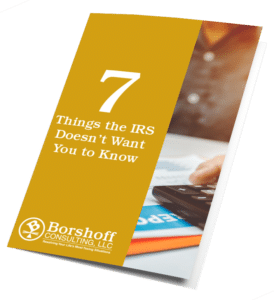With the rising cost of higher education, student loans now encompass the lives of those who have degrees. To help offset this cost, the government offers different education tax deductions and credits for qualified students. This only applies to those who are enrolled in eligible degree programs or schools.
The American Opportunity Tax Credit (AOTC) is one of the more beneficial tax breaks for parents and students paying the high costs of tuition. Unfortunately, if you take this tax credit, you cannot take any other education credits or deductions. However, this is not exclusive to this tax credit. It actually holds true for most education tax breaks.
Understanding tax credits and debits can be quite confusing. You need to understand IRS tax laws and know what you are eligible for and what would be most beneficial for you. You might want to analyze each education tax deduction and credit to make sure you are getting the most bang for your buck! This can get very frustrating if you don’t understand it all.
For this reason, it’s a good idea to have a tax professional prepare your annual tax return. They can help you if you want to try to take advantage of the best tax credits and deductions. He or she will know which break is best for your particular tax situation. They’ll be able to help you based on their experience, education, and expertise.
What is the American Opportunity Tax Credit (AOTC)?
The American Opportunity Tax Credit (AOTC) was created to help parents and students reduce the cost of higher education by offering a tax credit on their annual tax returns.
Tax credits reduce your taxable income and permit you to take a dollar-for-dollar deduction off your tax return. Tax credits are generally more beneficial than tax deductions for this reason.
The AOTC is a tax credit for qualified education expenses paid for an eligible student. It is only valid for the first four years of post-secondary education, and it must be used for qualified expenses only. Basically, this includes the cost of tuition, fees, supplies, and books needed for college classes.
Of course, there is more to it. A qualified tax consultant can help you navigate the qualifications for this tax credit to help you determine if you can take it or not. The last thing you want is a tax audit that reveals you have taken advantage of the system in some way. If this happens, you may have to pay back some of the tax refund you received in the past.
The tax credit gives you a nice break on your tax return by giving you a partially refundable credit worth up to $2,500 per eligible student per tax return. A refundable tax credit is one that you can possibly get a tax refund with. However, remember that you cannot take this tax credit with most other education tax credits or deductions.
Who is considered to be an eligible student?
There are some specific rules on what makes up an “eligible student” to the Internal Revenue Service. It’s important to understand this when trying to take certain education tax credits and deductions.
To be eligible for the American Opportunity Tax Credit, the student must:
- Be pursuing a degree or other recognized education credential
- Be enrolled at least half of the time for at least one academic period
- Not have finished the first 4 years of higher education at the beginning of the tax year
- Not have claimed THIS tax credit for more than 4 tax years
- Not have a felony drug conviction at the end of the tax year
Note: An academic period can be semesters, trimesters, quarters, or any other period of study, such as summer school. The school does not have to have academic terms, though.
If the school does not have these, the payment period can be used as the academic period. The payment period refers to the period when the payment for qualified educational expenses was made. It’s best to work with a qualified tax professional to determine these details on your annual tax return, so you can make sure you are filing correctly.
What do you need in order to claim this tax credit?
Form 1098-T: Tuition Statement Form
To claim the American Opportunity Tax Credit, the taxpayer or dependent must have received Form 1098-T: Tuition Statement from an eligible educational institution. That can be from an educational institution that is either domestic or foreign. To claim this education tax credit, use IRS Form 8863, and attach the completed form to your annual tax return.
Note: You should receive Form 1098-T: Tuition Statement Form from your school by January 31. If you did not receive the form from your school by this time, contact them directly. Do not contact the IRS for this information, as they will not be able to help you. Talk to your educational institution. Also, when you do receive the form, make sure your school has reported the correct amount. If you aren’t sure what that is, work with a tax expert!
A Valid Taxpayer Identification Number (TIN)
You must also have a valid TIN for the qualifying student. It must be issued or applied for on or before the due date of the tax return (including any tax extensions). A valid TIN can be your Social Security number, an individual taxpayer identification number (ITIN), or an adoption taxpayer identification number (ATIN).
Note: Since this is a requirement, make sure you obtain the required TIN ahead of time if you plan to take this tax credit on your annual tax return. After all, you don’t want to miss out on this just because you didn’t receive your taxpayer identification number on time. Be sure you plan ahead so that you can take advantage of the American Opportunity Tax Credit.
What are considered to be qualified education expenses?
It’s important to understand what qualifying expenses are for tax purposes so that you know which education expenses are covered and which are not covered.
According to the Internal Revenue Service, qualified education expenses are amounts paid for tuition, fees, and other education-related expenses for an eligible student. These expenses must have been incurred for an eligible student and must be required for enrollment or attendance at an eligible educational institution in order for that student to get the degree or certification he or she is seeking.
Qualified expenses also include student activity fees that a student is required to pay to enroll or attend the school. Examples of this would be fees a student is required to pay to fund any on-campus student organizations and activities.
The American Opportunity Tax Credit considers eligible expenses to be books, supplies, and equipment that the student needs for a course of study even if it is not paid to the school. The example provided on the IRS’s website is the cost of a required book for a course that was bought from an off-campus bookstore.
Regardless of the education tax deduction or credit, room and board, insurance, medical expenses (including student health fees), and transportation do not qualify as eligible expenses.
In other words, qualified expenses for the AOTC include tuition, fees, books, supplies, and equipment necessary to obtain the degree but within these specific parameters.
Get a tax consultation with a qualified tax expert to better assess which qualified expenses you are eligible to use and which you need to forget about for this tax credit. Most tax accountants will offer you a free initial tax consultation in order to assess your tax concerns and needs. That way, you can easily determine if they are a good fit to help you get the most out of your annual tax return.
What are the income limits for the AOTC?
To claim the full amount of the American Opportunity Tax Credit, your modified adjusted gross income (MAGI) must be $80,000 or less ($160,000 or less for married couples filing joint tax returns).
You can receive a reduced amount of the credit if your MAGI is over $80,000 but less than $90,000 (over $160,000 but less than $180,000 for those filing joint tax returns).
You cannot claim this tax credit if your MAGI is over $90,000 (if not filing a joint tax return) or over $180,000 if filing a joint tax return. For most taxpayers, the MAGI is the amount of adjusted gross income shown on your annual tax return.
A tax professional or accountant can help you determine what your modified adjusted gross income is. Briefly, MAGI (modified adjusted gross income) is the adjusted gross income for your entire household with any tax-exempt interest income and specific deductions added back. The IRS uses this number to determine if you are eligible for certain tax breaks, so it’s important to get it right.
What is the American Opportunity Credit worth?
The American Opportunity Tax Credit gives you a maximum annual credit of $2,500 per eligible student. It is, however, partially refundable. This means that you may be able to get a tax refund with this particular education tax credit, which makes it very valuable!
If the tax credit brings the amount of tax you owe to zero, you may have 40% of any remaining amount of the credit, up to $1,000, refunded to you.
The amount of this tax credit is 100% of the first $2,000 of qualified education expenses paid for each eligible student and 25% of the next $2,000 of qualified education expenses you paid for that particular student.
What else do I need to know about the American Opportunity Tax Credit?
It’s important that you make sure you are qualified to take this credit before taking it. Keep copies of all documentation that you used to take the tax credit, including your tax return itself. This means that you need to have all receipts and education bills available and ready.
The reason this is so important is that if the IRS audits you and determines you did not qualify for the AOTC or do not have adequate backup documentation, the IRS will make you pay back the amount of the AOTC, including interest. They may also charge you an additional penalty and ban you from claiming the credit for 2 to 10 years.
You will not be able to claim both the tuition and fees deduction and the AOTC for the same student when you file your tax return. The federal tuition and fees deduction permits you to subtract the cost of certain education tax benefits, such as college tuition and other education-related expenses and/or fees, from your taxable income. Tax deductions like this determine your adjusted gross income (AGI) on your tax return.
The rules are pretty strict if you have claimed the AOTC in previous years as well, so have a consultation with a tax accountant if you plan to take an education tax deduction or credit.
How can I take the American Opportunity Tax Credit on my taxes?
To claim the American Opportunity Tax Credit, use Form 1098-T: Tuition Statement that you should have received from your school. The amount on this form that you need will be found in box 1. To determine the amount you will need to claim or for more information about this form, see IRS Publication 970: Tax Benefits for Education.
That publication goes into detail regarding whether or not you can claim this education tax credit and which education-related expenses qualify for this tax benefit. It also goes into the specifics that you need to know to determine if you are or are not an eligible student. The publication explains how to file the tax credit and claim the tax credit on your tax return.
However, this publication is no substitution for working with a qualified tax professional. The publications written by the Internal Revenue Service can be very lengthy and difficult to understand, so it’s best to work with someone who understands the terminology, numbers, forms, schedules, and other aspects of tax accounting.
In essence, to claim the American Opportunity Tax Credit on your tax return, you will want to complete IRS Form 8863: Education Credits. You will need to complete Part III of the form for each qualifying student that you are claiming on your tax return. Most of the numbers and information for this part of the form will come from the tuition statement that you get from your educational institution.
There will also be several yes and no questions that you should be able to fill out on your own. Based on your answers to these questions, you will be directed to the correct line on the form, so it should be pretty easy to follow along, provided you know the answers to these questions. You will want to understand your tax return before filling out this form.
Once you have completed part III of the tax form, you will be directed to the beginning of the tax form. It will then have you do some simple calculations based on your tax return. You won’t need to worry about part II because the American Opportunity tax credit is a partially refundable tax credit.
Also, you will want to attach that form to your IRS Form 1040 or 1040-A. If you do not complete IRS Form 8863 and attach it to your tax return, you may not be able to receive this partially refundable education tax credit. (IRS Form 1040 is usually your tax return itself).
Conclusion
If you are considering taking a tax break for education costs this year, you should try to take this one, as it is very beneficial. It has fewer restrictions than some of the other tax breaks related to education expenses and has a great partially refundable tax credit that you can take advantage of.
If you need assistance, please schedule a tax consultation with a qualified professional, such as a tax accountant. Tax consultants who are qualified and experienced will know the rules and requirements that you need to take into consideration when taking a tax credit or tax deduction.
Also, a qualified tax professional knows the right forms and schedules you need in order to take a tax credit like the American Opportunity tax credit. They understand the numbers on your tax return like your AGI and MAGI, so it’s a smart idea to work with one when trying to take education tax benefits.
Are you expecting an audit or want to be prepared “just in case?” We can represent you in the event of an audit or walk you through the entire process step by step. You should consult a qualified tax accountant when preparing for a tax audit. We are here to help.
Are you a student or parent needing help claiming the American Opportunity Tax Credit? If you need assistance with tax credits or help with your tax return, please contact us today for a free consultation. We are happy to help make this tax season easy for you. You can trust Indiana’s tax expert!





